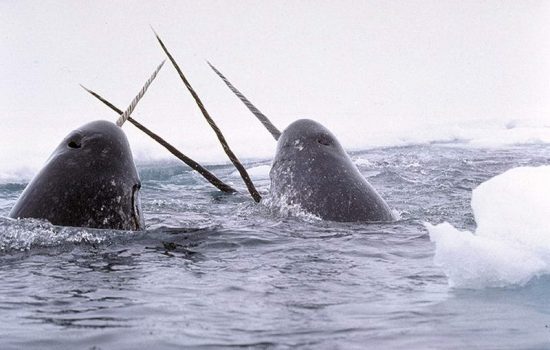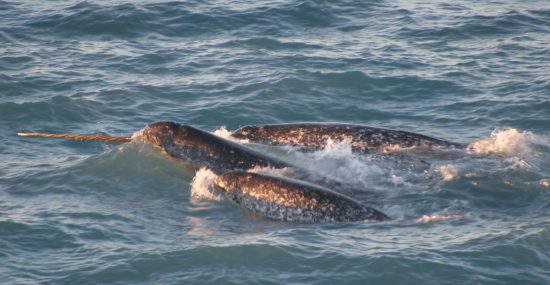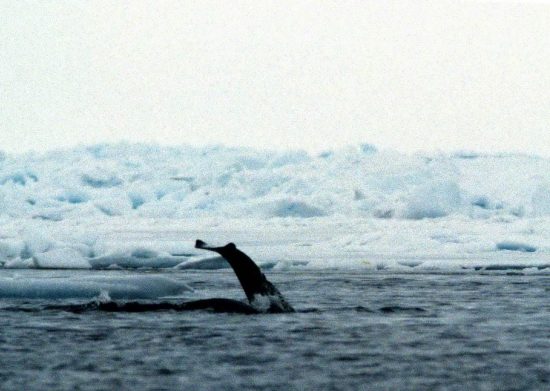




Human disturbances cause narwhals to freeze and escape simultaneously
New insights into the effects of ocean noise and increased human activity on deep-diving Arctic whales now give us cause to worry for their well-being.
During a new study by UC Santa Cruz, narwhals were outfitted with a heart monitor. After capture and subsequent release, they performed a series of deep dives. They swam hard and fast, while their heart rate dropped to unexpectedly low levels of three to four beats per minute. This combination of hard work and low heart rates while not breathing is extremely energy-sapping and may make it difficult for the deep-diving whales to get enough oxygen to the brain and other organs.
"How do you run away while holding your breath? These are deep-diving marine mammals, but we were not seeing normal dives during the escape period. I have to wonder how narwhals protect their brains and maintain oxygenation in this situation," said Terrie Williams, a professor of ecology and evolutionary biology at the university. She is the first author of the new study, recently published in the journal Science.
Narwhals, known as "unicorns of the seas", live in the Arctic waters all year round. Until recently, before the decline in Arctic sea ice made the region more accessible to shipping, oil exploration and other human activities, they were relatively isolated from human disturbances.
The narwhals observed after their release gradually returned to more typical behaviour and normal heart rates. Williams worries that man-made disturbances may give raise to behaviours in narwhals that are simply incompatible with their physiological capacities. Their natural response when fleeing from killer whales and other threats is usually to move slowly, either to great depths or to shallow coastal areas under the ice, where killer whales cannot follow. "This is not a speedy animal," she said.
Decreased heart rate (called bradycardia) is a normal part of the mammalian submersion reaction, along with other physiological changes to save oxygen. Researchers measured the narwhals’ heart rate at rest at the surface, which was about 60 beats per minute. During normal dives (after the escape), their heart rate dropped to 10 to 20 beats per minute, depending on the training level of the individual animal. The heart rate usually rose with increased exercise – even during a dive.
"That's what is so paradoxical about this escape response – it seems to cancel out the exercise response and maintains extreme bradycardia even when the whales are exercising hard," Williams said.
The extremely low heart rates that Williams observed in the narwhals when they escape are similar to those seen in animals with a "freeze reaction," as if they were paralysed. Narwhals evidently react to threats or human disturbances by displaying two opposing responses: they flee and freeze at the same time. In their response to a stressful situation, there are elements of a physiological freeze reaction as well as a behavioural flight response. This has potentially harmful consequences.
The same phenomenon can also occur with other deep-diving whales when they are disturbed by man-made noise in the oceans, which has been associated with whale strandings.
"The disorientation often reported during strandings of deep-diving whales makes me think something has gone wrong with their cognitive centers," Williams said. "Could this result from a failure to maintain normal oxygenation of the brain?"
Oxygenation
Williams calculated that the escape dives her team monitored in narwhals required 97 percent of the animal's oxygen supply and often exceeded its aerobic dive limit (meaning that the oxygen stores in muscles, lungs, and blood are depleted, followed by anaerobic metabolism). Normal dives of similar duration and depth require only about 52 percent of the oxygen storage of a narwhal, according to the study.
Link to the study: science.sciencemag.org/content/358/6368/1328
 Herbert
Herbert 21st December 2017
21st December 2017